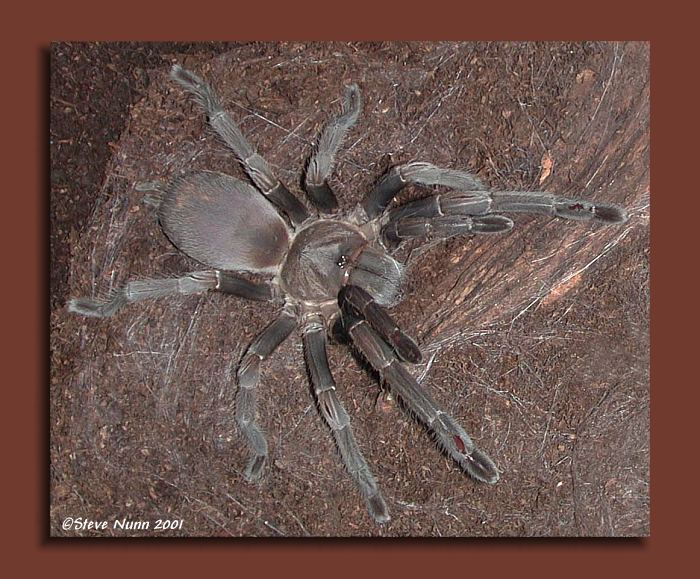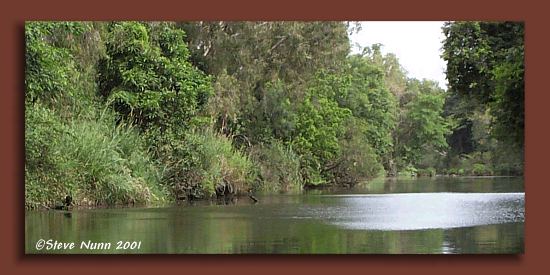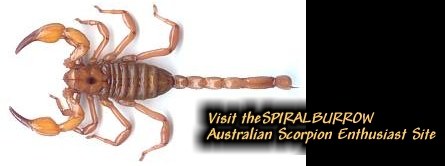

Genus: Phlogiellus
Phlogiellus species
Spiders from this genus are Australiaís true rainforest dwellers, digging winding opportunistic burrows amongst rocks, logs, and e.t.c. Although the genus has only been recently recognised in Australia, specimens have been collected and misnamed S.crassipes for decades. Some spiders from this genus cannot `hissí, and many species look very similar. I know of three species (all undescribed) found in Australia. Two of which are similar in size or are smaller than the average Aust. Theraphosid. One of which is quite large and, unlike others very stoutly legged. Itís interesting to note that within this genus, of the two of the ultimate instar male sp. that Iíve seen, one was dimorphic, the other was not.

This genus is in dire need of species specific taxonomic work as the majority of Theraphosids sold to the Australian pet trade, as S.crassipes are in fact from the genus Phlogiellus. Have a look at SPIDER IDENTIFICATION section (coming soon) to see if your S.crassipes could be Phlogiellus sp.
At the moment the Qld Museum is doing work on this genus so with some patience, species identification should be on itís way.
.jpg)
Image: Two Phlogiellus species
Above are pictured two species from the genus Phlogiellus.
(Fig's, 1,2): Species from the lower East Coast of Cape York (Qld).
(Fig's, 3,4): Species from the Cairns region (Qld).
The species on the left (Fig. 1 &2) are a very large spider, reaching lengths in excess of 70mm (opisthosoma and cephalothorax), and are quite stoutly legged. The male (Fig.1) measured in at around 175mm leg span. This species show a good representation of sexual colour dimorphism. The male from the other species (Fig.4) shows no color dimorphism, looking the same as his partner (Fig.3) except for sexual appendages (palps) and build. The ultimate instar females (Fig's 2,3) are fairly similar, except for size, one being nearly twice as large (Fig.2) as the other.

